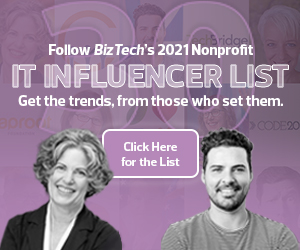Think Beyond the Initial Donation
Taking a more targeted fundraising approach can push the discussion beyond Giving Tuesday.
In the past, high-profile donation events like the Ice Bucket Challenge — at the time, a valuable way to drum up interest in a nonprofit’s mission — offer a great example of the challenge that nonprofits face with viral content, Basset says. They can only take things so far in the long run, as they risk trading long-term value for short-term attention. The real opportunity is in building consistent recurring donations, even if they are small.
“Let’s say somebody gives me $100, or $10 a month,” he says. “I’d rather have $10 a month, because that person’s buying into my organization. I can have them give more later, mention it to a friend — plus, over the course of a year, it’s $120.”
Recent data from Giving Tuesday supports the idea of nurturing small donors (those who give between $1 and $100), who saw the smallest rate of retention decline, along with large donors (those who give more than $50,000).
And despite the challenges in retention, growth soared for repeat donors, which represented 82 percent of overall growth, according to the study. That makes sense, Bassett says. “It just goes back to putting people in a position where they can give the most, and then getting your hooks into them so there’s a relationship.”
Nonprofits Must Tell Stronger Data-Driven Stories
Another area of potential, Bassett says, is the use of stories that highlight the nonprofit’s mission while matching the needs of a specific audience.
“The story of someone who needs help, here’s how we help them — and, by the way, we’ve helped X-thousand people — is critical,” he says.
MORE FOR NONPROFITS: How to use tech to manage projects more effectively.
Building a strong data discipline can help with this, as those who donate are looking for evidence that their donation will have an impact.
Classy’s recent Why America Gives report notes that the top thing that encourages a strong donor experience is clear communication about the impact the donation will have, while a lack of understanding of the donation’s impact will discourage donors from giving.
And with two-thirds of donors hearing about nonprofits through friends or family, according to Classy’s survey of 1,000 U.S. donors, strong data can help to seal the deal.
Build a Fundraising Technology Backbone
With Giving Tuesday supplying nonprofits a push, the growth of all-digital fundraising techniques has changed much in the fundraising landscape over the past decade, according to Bassett.
Not only have data capabilities significantly improved, he said, but so too has the experience of actually using the software, with spreadsheets and databases being replaced with cloud-based platforms such as Salesforce, which can help manage the fundraising technology apparatus.
“The UI/UX has to be where a volunteer coming in off the street can help,” he said. “That is a radical difference from where the fundraising world was 10 years ago.”
In addition to the right technology, it’s crucial to have a strong team at your back, one that not only can help manage the relationships with fundraising software providers, but who can also help build out the digital infrastructure. Bassett points to infrastructure automation through IGNW, as well as a strong data analytics discipline to uncover and manage any fundraising opportunities.
“Five years ago, it was ‘How do we get our data in the same spot?’ Now it’s, ‘Oh my God, we have all this data. It’s messy. What do we do with it?’” he said. “The time-to-value for nonprofits is critical. And they’ve done all the work to get to the finish line, they just need that last little push to make it effective.”










